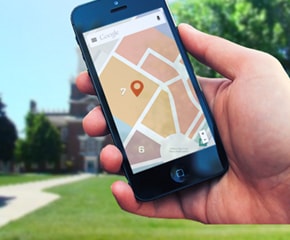
African Americans seeking a better life in Detroit found jobs at Ford Motor Company, but often in dirty and dangerous roles.
|
|

Susana Allen Hunter's creativity in quilting was fueled by the practical concerns of her life in the Jim Crow South in one of the poorest counties in the United States. |
|

One of the reasons Melvin Parson founded his growers’ association was to get "a seat at the table," as people of color were not represented among the farmers he met.
|
|

In the late 1960s, some African Americans began to channel frustration and anger at lack of progress in civil rights and equality into the multi-faceted idea of “Black Power”—including the reshaping of African American education. |
|

African Americans had long faced humiliation, segregation, and physical danger in their travels before Rosa Parks challenged Jim Crow laws on a Montgomery city bus. |
|

George Washington Carver’s artistic talents helped him promote his scientific discoveries toward the goal of improving the standard of living of African American farm families. |
|

Paradise Valley was a commercial center for African American Detroiters by day and a nightlife destination for both African Americans and whites at night, but was ultimately destroyed by urban renewal. |
|

More than 180,000 African American men served in the U.S. Colored Troops during the Civil War, risking their lives to secure freedom for all African Americans. |
|

After racially charged civil unrest in Detroit in 1967, Detroit Edison documented its work to assess damage and restore power, but the photos also captured a city in the immediate aftermath of chaos. |
|

Kimberly Bryant was inspired to found Black Girls Code through the “wake-up call” of lack of diversity in her daughter’s technology classrooms. |
|

Political jewelry goes beyond ordinary campaign buttons to express a fashion sensibility and make a statement. |
|

From the founding of the nation, there has never been a common American voting experience. Methods vary across states, counties, and municipalities, reflecting differing and ever-evolving ideas about how to vote -- and who should participate. |
|

American women gained the right to vote after a long, hard struggle. A concerted effort to secure voting rights for women began in the mid-1800s and continued until the ratification of the 19th Amendment in 1920--and even then, some women had to fight on. |
|

Social transformation involves a shift in the collective consciousness of a society. It occurs when people create change through new patterns of behavior or social action. |
|

The stories and lives represented in this exhibit just barely scratch the surface of what it means to be LGBTQ+ in the United States. |
|

Thomas Jefferson, a Virginia delegate to the Continental Congress (and eventually a U.S. president), had been charged with composing the draft of this document. |
|

Throughout history, people have found different ways to advocate for change, whether marching in the streets or finding quieter ways to be an ally. Both are valuable in drawing attention to injustices. |
|

The event, which soon became known as the Bloody Massacre, or—over time—the Boston Massacre, incensed Bostonians to such an extent that it came to be considered a defining moment in the lead-up to the American Revolution. |
|

The story of Frederick Douglass’s life is, at turns, tragic and awe-inspiring. He is a testament to the strength and ingenuity of the human spirit. |
|

By 1955, Black activists and community leaders in Montgomery, Alabama, were exploring the idea of a city-wide bus boycott—an organized refusal to ride the buses after decades of humiliating incidents and indignities that the Black community suffered. |
|

This striking quilt, Nude is Not a Color, was created in 2017 by a worldwide community of women who gathered virtually to take a stand against racial bias. |
|

What is lesser known is that the early women’s suffrage movement began within the context of the broader struggle for women’s rights and it involved many more people—men as well as women, Black as well as white. |
|

























